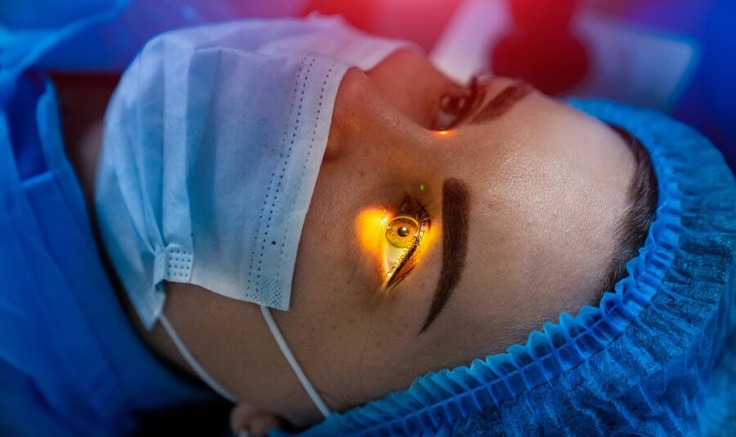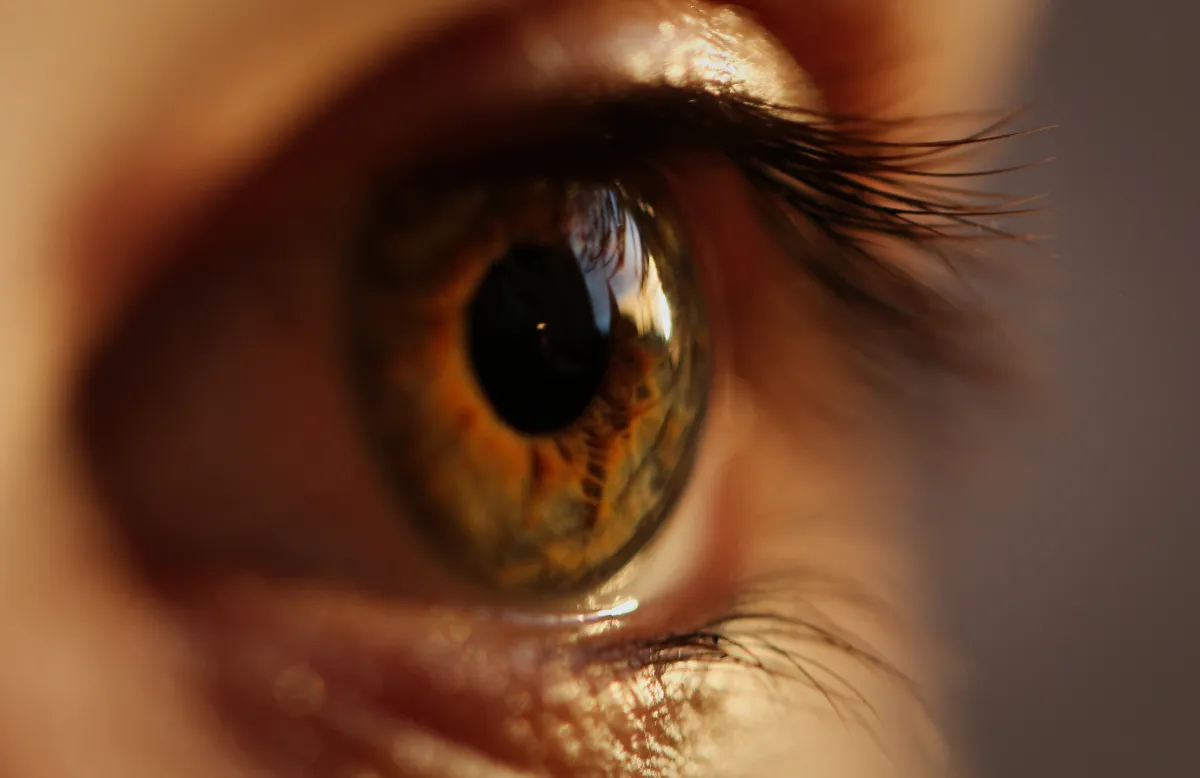- Home |
- About Us |
- Services |
- Our Doctors |
- Resources |
- Contact Us |
- Book Appointment

What is Retina ?
Kailash Eye Care is the most trusted centre for retina care in Delhi! Think of your retina as the camera film of your eye – capturing every moment you see. Under the expert care of Dr. Naginder Vashisht, we use the latest technology and advanced treatments to protect your retina and preserve your vision. Whether you're concerned about your retina health or need treatment for retinal diseases, we're here to provide the best care possible.
Book Appointment
What Are Retinal Diseases?
Your retina acts like the camera sensor of your eye, converting light into signals that the brain can understand. When your retina faces issues, it can affect how you see the world. That’s why keeping your retina healthy is essential for preserving clear vision. At our centre, we treat a wide range of retinal diseases, each requiring specialized care. Here are some of the common retinal conditions :
.webp)
What Are Retinal Diseases?
At Kailash Eye Care, we approach each of these conditions with a deep understanding and an array of treatment modalities, ensuring that every patient receives the most effective and personalized care.
- Diabetic Retinopathy: Diabetic retinopathy is damage to the blood vessels in the retina due to uncontrolled diabetes.It's one of the leading causes of blindness if left untreated.
- Age-Related Macular Degeneration (AMD): AMD affects the central part of the retina (macula), leading to a decline in central vision, which is essential for tasks like reading and driving.
- Retinal Detachment: Retinal detachment is a serious condition where the retina separates from the underlying tissue, causing vision loss. Immediate medical intervention is crucial.
- Macular Hole: A macular hole is a small tear in the macula,the central part of the retina, that leads to blurry or distorted central vision.
- Retinal Vein Occlusion (RVO): Retinal vein occlusion occurs when one of the veins in the retina becomes blocked, leading to swelling and potential vision loss.
Diagnostic Modalities:
We invest in cutting-edge retinal care technology to provide the highest level of precision in diagnosis and treatment. Here’s how we ensure you get the best care:
- OCT Angiography: OCT Angiography is an advanced diagnostic imaging technique that captures detailed, high-resolution images of the retinal blood vessels without the need for dye injections, unlike traditional angiography methods. By using the principle of light reflection, OCT angiography generates cross-sectional images of the retina, allowing us to visualize blood flow patterns in the eye's microcirculation.
- Optical Coherence Tomography (OCT): "Think of it as an MRI for your eyes." This technology allows us to capture high-resolution images of your retina, helping us identify early signs of disease like macular degeneration before they become more severe.
- Fluorescein Angiography (FFA): "It's like a GPS for your eye's blood vessels." This test uses a special dye to highlight the blood vessels in the retina, enabling us to identify blockages or leaks that could affect vision.
- B-scan Ultrasonography: B-scan ultrasonography is a non-invasive, highly effective tool used to assess the interior structures of the eye when traditional methods like direct visualization are not possible, often due to media opacities like cataracts or vitreous hemorrhage.
- Specialized Retina Surgery Room: Our eye surgery theatre is equipped with the latest retinal surgery equipment to ensure the most precise and safe procedures, even for delicate retina conditions.

Treatments offered for Retinal diseases
Green Laser for Retinal Treatment
What it is: The green laser is widely used in retinal treatment for conditions like diabetic retinopathy, retinal vein occlusion, and macular edema. It helps seal blood vessels to prevent further damage.
Advantages:
- Minimally invasive and relatively quick procedure.
- Prevents further damage to the retina, reducing the risk of vision loss.
- Targets only the affected areas, leaving surrounding tissues unaffected.
Ideal for: Patients with diabetic retinopathy, macular edema, and retinal conditions involving abnormal blood vessel growth or leakage.
Photodynamic Therapy (PDT)
What it is: PDT uses a light-sensitive drug combined with a laser to treat conditions like wet age-related macular degeneration (AMD) and choroidal neovascularization.
Advantages:
- Effective in treating wet AMD and reducing leakage from abnormal blood vessels.
- Non-invasive procedure with no need for traditional surgery.
- Can help stabilize vision and slow the progression of macular degeneration.
Ideal for: Patients with wet AMD or choroidal neovascularization.
Laser Indirect Ophthalmoscopy (LIO)
What it is: LIO is a specialized technique used to treat retinal conditions like diabetic retinopathy and retinal tears using a highly precise laser.
Advantages:
- Enhanced precision with a wider and clearer view of the retina.
- Versatile treatment for various retinal conditions, including retinal tears and macular holes.
- Minimally invasive with quick recovery.
Ideal for: Patients with diabetic retinopathy and retinal tears needing precise laser therapy.
Cryopexy
What it is: Cryopexy involves using extreme cold to create a scar that seals retinal tears or holes, preventing retinal detachment.
Advantages:
- Minimally invasive with a quick recovery.
- Effective for sealing retinal tears and preventing detachment.
- Most patients resume normal activities in a few days.
Ideal for: Retinal tears, retinal detachment , lattice degeneration
Anti-VEGF Injections
What it is: Anti-VEGF injections block abnormal blood vessel growth in the retina, reducing swelling and leakage, improving vision.
Advantages:
- Improves vision by reducing retinal swelling.
- Minimally invasive with quick recovery.
Ideal for: Diabetic retinopathy, age related macular Degeneration, Retinal Vein occlusion.
Steroid Implants (Ozurdex Implant)
What it is:: Steroid implants reduce inflammation and swelling in the retina, providing long-term relief for retinal conditions.
Advantages:
- Long-lasting effects, reducing swelling in the retina.
- Reduces inflammation and preserves vision.
Ideal for: Diabetic Macular edema , uveitis.
Pneumatic Retinopexy
What it is:: Pneumatic retinopexy is a minimally invasive procedure used to treat retinal detachment. A gas bubble is injected into the eye, which helps reattach the retina.
Advantages:
- No incisions required, making it non-invasive.
- Quick recovery time and effective for certain types of retinal detachment.
Ideal for: Patients with certain types of retinal detachment.
Scleral Buckling
What it is: Scleral buckling involves placing a silicone band around the eye to gently push the retina back into place, treating retinal detachment.
Advantages:
- Proven technique for reattaching the retina.
- Minimally invasive with quick recovery.
Ideal for: Patients with retinal detachment requiring surgical intervention.
Vitrectomy
What it is: Vitrectomy is a surgical procedure where the vitreous gel is removed from the eye to treat conditions like retinal detachment, macular holes, and diabetic retinopathy. It allows the surgeon to directly repair the retina.
Advantages:
- Provides improved visual outcomes by removing interfering vitreous gel.
- Effective for complex retinal conditions.
Ideal for: Patients with retinal detachment, macular holes, and diabetic retinopathy.
Minimally Invasive Vitreous Surgery
What it is: This modern approach involves tiny incisions to access the vitreous and retina, minimizing trauma and promoting faster healing.
Advantages:
- Faster recovery compared to traditional surgeries.
- Less risk of complications and reduced scarring.
Ideal for: Patients seeking a less invasive approach to vitreous and retinal surgery.
Myths & Facts
- Myth: Once my vision is gone, there’s no hope.
- Fact: "Not true!". Early detection and treatment can often restore or prevent further vision loss. Catch problems early and save your vision!
- Myth: Retinal diseases always run in families.
- Fact: While some retinal conditions are inherited, many others are related to lifestyle, age, or conditions like diabetes and high blood pressure. Your family history doesn't determine your fate.
- Myth: There’s no way to know if something’s wrong until it’s too late.
- Fact: Your eyes can send signals like floating spots, light flashes, or shadows. Regular check-ups help us catch retinal problems early before they cause serious damage.
- Myth: Retinal problems always lead to blindness.
- Fact: We assure you that "With proper care, many retinal conditions can be managed without leading to blindness,". Early treatment is key to maintaining good vision.
- Myth: Only older people get retinal problems.
- Fact: Retinal diseases can affect people of all ages, especially those with underlying health conditions like diabetes. Eye care is important at every age!
- Myth: Laser treatment fixes everything.
- Fact: Lasers are powerful tools, but they're not a one-size-fits-all solution. Different retinal conditions require different treatments. We'll find the best approach for your specific needs.
Did You Know?
Diabetes is not just about controlling your blood sugar; it’s also a leading cause of retinal problems. By maintaining good diabetes control and scheduling regular eye exams, you can protect your vision and prevent complications like diabetic retinopathy.

Book an Appointment Today at Kailash Eye Care!
If you're looking to improve your vision, especially with retina-related concerns, we're here to help. Our expert team offers advanced treatments to address various retinal conditions. Schedule a consultation with us to learn more about how our innovative retinal procedures can help restore and enhance your vision. .
Book AppointmentWhy Choose Kailash Eye Care for Retinal Treatment?
At Kailash Eye Care, your vision health is our top priority. Under the expertise of Dr. Naginder Vashisht, we combine advanced technology with compassionate care to treat retinal diseases effectively. With years of experience and a reputation for excellence, we have helped thousands of patients protect their vision. We treat each eye as if it were our own, and we’re committed to restoring your sight and improving your quality of life.

Patient Testimonials
“The Uveitis treatment I underwent under Dr. Vashisht was a life-changer. Forever grateful to Kailash Eye Care in Patel Nagar, Delhi”
- Akshay P.
“Dealing with Macular Degeneration was tough, but Dr Vashisht's expertise made the journey smoother. Highly recommend!”
- Priyanka R.
“From diagnostics to post-treatment care, my experience at Kailash Eye Care was exceptional. Kudos to Dr. Vashisht and his dedicated team!”
- Karan L.
Frequently Asked Questions
Each procedure varies, but most treatments take between 30-60 minutes. We take our time to ensure everything is done with precision.
"Most treatments are painless," assures our experts. Numbing drops are used to keep you comfortable. Many patients even nap during the procedure!
Recovery time varies, but most patients return to their daily activities within a few days. We’ll provide clear aftercare instructions to help your eyes heal perfectly.
We are confident in the success rates, stating: "Thanks to modern technology and early detection, our success rates are high. The key is catching issues early before they worsen."


